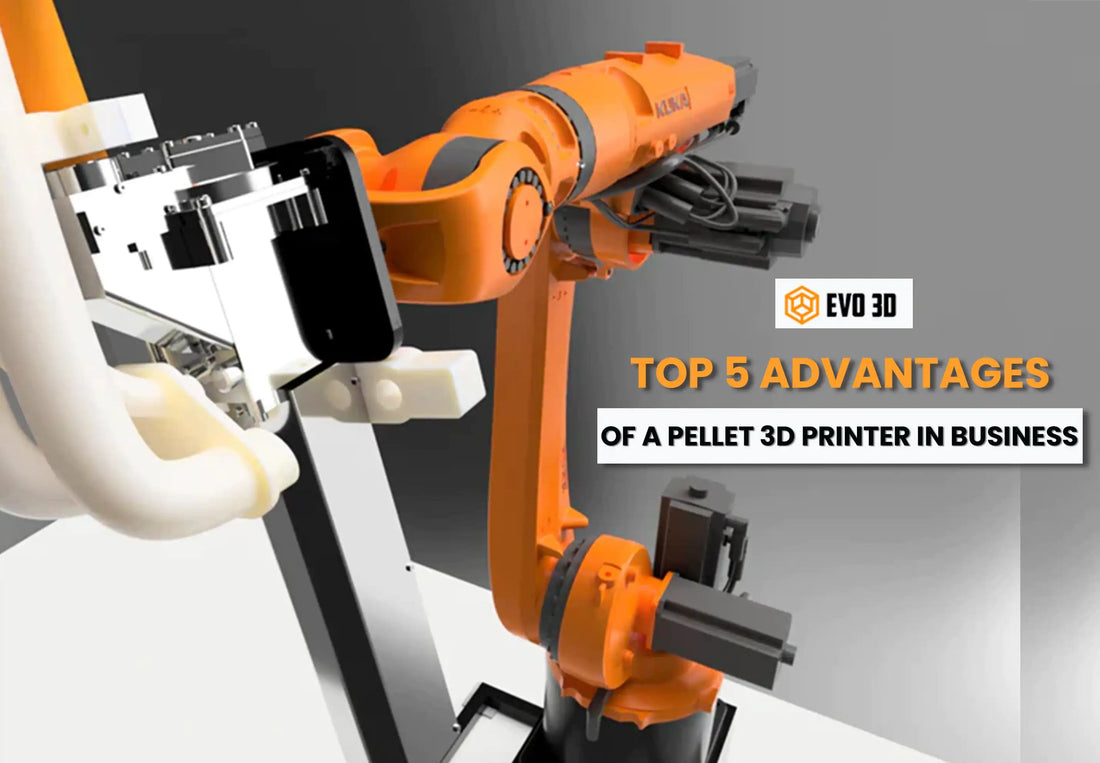Top 5 Advantages of a Pellet 3D Printer in Business

3D printing has been instrumental in bringing change in industrial prototyping and developing industrial solutions. But today we will be talking about FGF (Fused granular fabrication) technology, known as pellet 3D printing. Printing has some advantages in industrial manufacturing. Printing with granules has several advantages over FDM printing.
Considering the specifics of pellet 3D printing, along with its strength and weaknesses, this technology is quite apt for the manufacturing and production of parts with simple geometries and a high level of detailing. It offers great speed and large nozzle diameters. So, first, let’s know what is pellet 3D printer.
What is Pellet 3D Printing?
Plastic pellets are granular materials obtained from the process of pelletizing. In this process, the materials are moulded into the compressed form of pellets. These types of resources are increasingly becoming popular in the world of 3D printing.
The pellet-based 3D printer uses recycled plastic and other old appliances than other injection moulding and pellet-based 3D printers. 3D printer users with time find that a pellet 3D printer is the best option. -keeping aside resolution and part complexity. A lot of manufacturers have already found using pellets with other production machines can be rewarding.

Some industries like aerospace, automotive, marine and construction are already leveraging the use of pellet 3D printing. It also provides furniture and interior designers with the option to get their projects to mass production in a cost-effective manner. So, let’s discuss some benefits of 3D printers in detail.
What are the Top 5 Benefits of a Pellet 3D printer?
1. Cost - When compared to a pellet with a filament, Pellet 3D printing is cost-effective the bigger the volume, the less per kilogram. Depending on your expected use (mass use and production), pellet 3D printing is a cost-effective and more flexible method of printing than with other methods and acid-based filaments like PLA, ABS, and HIPS.
2. Size - No matter if you are planning to print a 3D-printed piece of furniture or any other large object, they can be printed with economically feasible and cheaper materials with fast print times. Robotic arms coupled with pellet -fed extruders are typically well -suited for large prints.
3. Eco-friendly - 3D printing is one of the revolutionary technology that saves industrial constraints and save the planet as well. As the world becoming more and more aware of the damage that plastics are causing, 3D printing is one a revolutionary technology that can save our planet. However, there are a few initiatives that already have been taken to cut plastic production. It will be interesting to see how technology could be a game-changer in eliminating direct and indirect waste with plastic production.
4. Custom Material - The benefit of using pellets for 3D printing is that you can create something unique. Pellets are a great way of recycling and can print products with recycled plastic. Whether you want to print large objects or small objects, you can do everything with pellets just as any other 3D printer does with the added benefit of being able to create unique plastics you have access to.

5. Speed - Speed can be another reason why you want to choose 3D printer pellets. They have high speeds compared to using powder. Pellet 3D printers are extremely convenient and faster than FDM printers. Pellet 3D printers are 100 times faster than FDM printers and can be great to work with. With the pellet extruder design and large heating zones, these printers offer fast print speed and are invaluable for the industrial manufacturing of large parts and production.
In Conclusion,
The main advantage of pellet 3D printing is the reduction in the final cost and short manufacturing time. You should also note that it can greatly reduce jams during the manufacturing process. In short, additive manufacturing with granules can create a thrilling yet fun experience for all.
